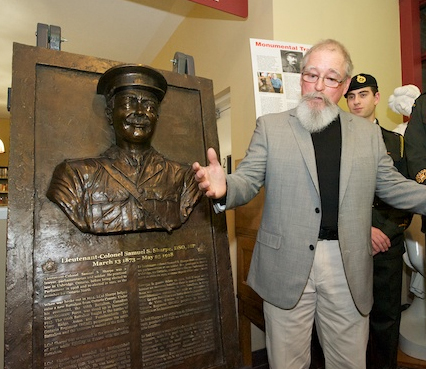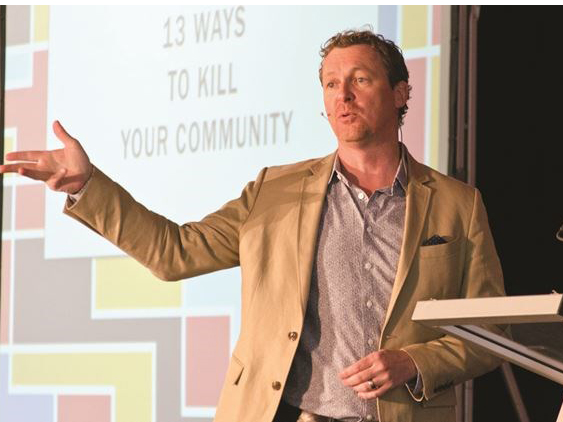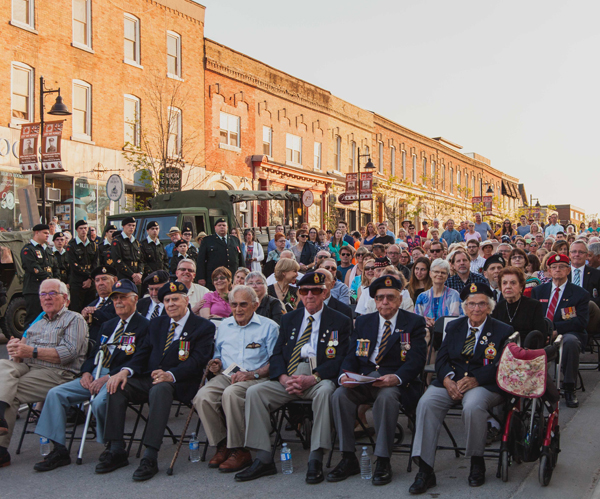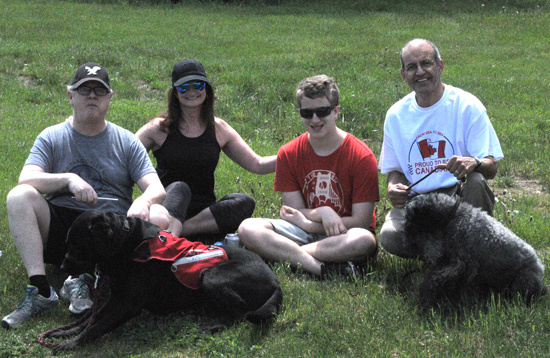
During her speech at the Sam Sharpe statue unveiling, last Friday night, MP Jennifer O’Connell became emotional as she explained that the day before, Members of Parliament had voted unanimously to install Tyler Briley’s sculpture of Sam Sharpe in the Centre Block of Parliament in Ottawa.
And when Seamus O’Regan, the minister of veterans’ affairs, quizzed her about the community groundswell of support in Uxbridge that had brought this motion to the House, he seemed genuinely impressed.
“Who are these people?” O’Regan asked her. “What is it about Uxbridge?”

MP O’Connell did her best to explain that some people in this township have worked for nearly a decade to see L/Col. Sharpe’s name restored to the records of Canada’s Great War history and his reputation retrieved from the stigma of being dismissed simply as mentally ill with “shell shock.”
But there’s even more to that grassroots energy than just provoking a motion in Parliament. Some would say the success of the motion and the parallel unveiling of Wynn Walters’ statue here Friday goes far deeper than that.

Coincidentally, last week, Doug Griffiths, the Alberta-based consultant, made his long-awaited presentation about what builds community and what kills it. On an already busy night in Uxbridge, he drew an attentive audience of politicians, business decision-makers and concerned citizens to Trinity United to hear his 13 criteria for killing a community.
What I found extraordinary, was that just two days later, the event staged at our main intersection to commemorate the death of Sam Sharpe illustrated many of the points in his reverse-psychology thesis.

For example, he suggested a sure-fire way to kill a community is to disengage from youth. From the outset, the campaign that culminated in Friday’s statue unveiling grew from our young people. Certainly, youth such as the USS “Vimy 100” students drew much of their inspiration from teacher Tish MacDonald. But I watched those young people assemble the street set for the event, approach and assist merchants decorate, and then personally escort each of the veterans to and from the ceremony like their own blood relatives.
Said one vet, “I didn’t realize how much these kids cared.”
Another common pitfall “community therapist” Griffith described Wednesday night was the town that is both blind to its strengths and its weaknesses – in other words, being complacent. Well, Uxbridge was not the first to acknowledge the need to view post-traumatic stress disorder among soldiers and first responders as a treatable wound.
However, based on the support of civic administrators, corporate donors and health specialists locally, not to mention the Township’s initiative to back Wynn Walters’ more honest depiction of the cost of war, this community has broken a lot of stereotypes. It has recognized an unconventional view of warriors and peacemakers.
It has engaged youth and seniors to invest in a tangible commemoration and an intangible awareness. It’s put its money where its mouth is. And it’s taken on historians and suggested maybe we all got “shell shock” wrong in the first place, so let’s start fixing it.
Perhaps most illustrative of the unique way this town chose to honour a fallen soldier, whom history and Parliament forgot, was to invite his living relatives – in Griffiths’ estimation, a group of outsiders – to bring their sensibilities to the mix. The effort was made to invite and accommodate Sam Sharpe’s relatives from Ontario, Manitoba and even from the state of Mississippi. And when Kelly Sharpe addressed the audience, we knew bringing their outside view made a difference.
“You have done the Sharpe name proud,” suggested Terry Sharpe from Columbus, Mississippi. “We’re all so overcome.”

But the statue unveiling wasn’t the only constructive moment when looking at Uxbridge’s distinctive approach. There was Sunday afternoon’s dog walk for Dog Guides Canada. Not just another community charity event, the one-hour walk through town involving canines and their owners, raised more than $6,000 for the training of dogs to assist people with visual, hearing, autism, epilepsy, and diabetes disabilities. Sure, it was a good deed. But when we learned that a local family has benefitted directly, again it spoke volumes about this community’s heart.
“We couldn’t have managed without this assistance,” said Lisa Wilson, whose son has relies heavily on a Dog Guides dog to help him cope with autism. “No other agency understands our needs. We are also so thankful our community backs this program.”
Perhaps Doug Griffiths was right in his assessment of a town that appears to be prospering, growing, and functioning. As he pointed out, if we believe our community can succeed, we have a pretty good chance of achieving that. Conversely, if we believe it will fail, we can probably get there too. So, I’d certainly encourage Seamus O’Regan and others to come to examine what makes us different, to examine our efforts to grow Uxbridge, and even to offer suggestions for ways we can do it better.
As Griffiths says in the end, “Those who say it cannot be done, shouldn’t interrupt those who are doing it.”